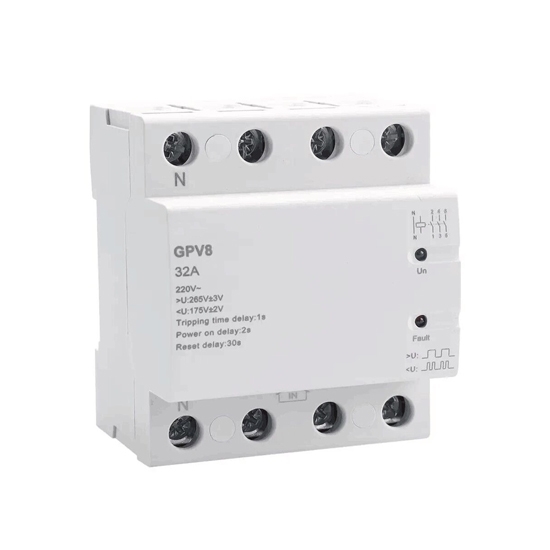
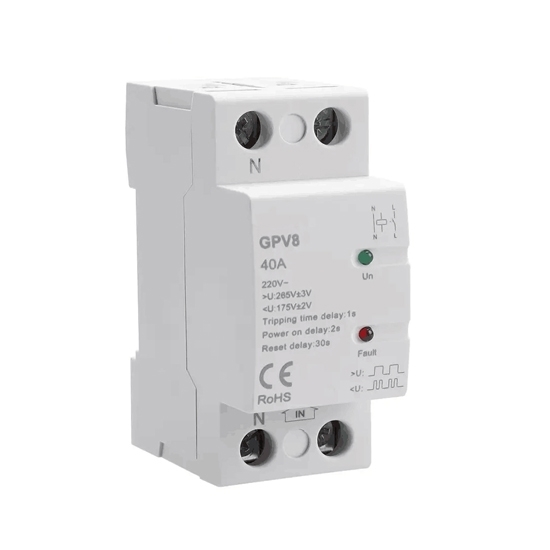
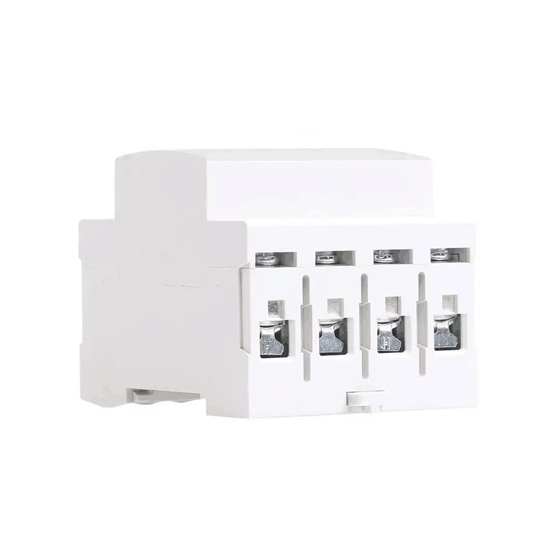
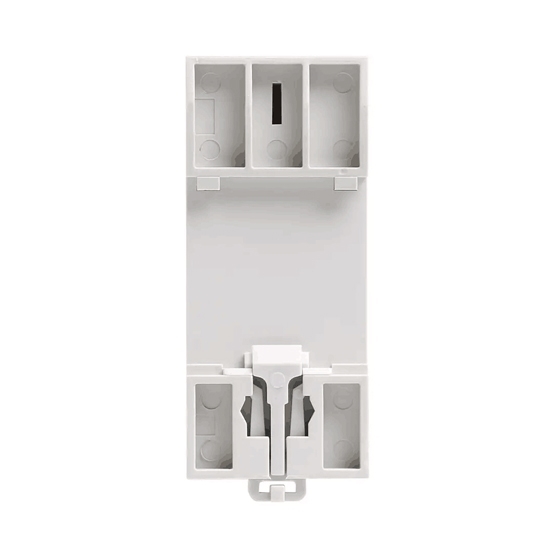
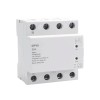
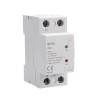
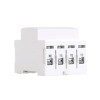
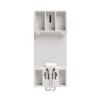
- Stock: In Stock
- Model: RDDLZ-OVP-32A
- Weight: 1.00
- SKU: RDDLZ-OVP-32A
Available Options
Cheap 2 pole/4 pole overvoltage protector for sale online, comes with 32A rated current, 220V rated voltage, lower incoming line mode, auto recovery voltage protective device, widely used in household appliances, industrial equipment, computers, etc.
Specifications
- Model: RDDLZ-GPV8-32
- Rated Voltage: 220V
- Rated Current: 32A
- Incoming Line Mode: Lower Incoming Line
- Pole: 2 Pole/4 Pole
- Voltage Detection Error: ≤1%
- Output Voltage: Over / Under Voltage (1s) Phase, Failure/ Phase Sequence (1s)
- Delay Error: ±10%
- Electrical Life: 100000 times
- Mechanical Life: 1 Million times
- Ambient Temperature: -20°C~55°C
- Maximum Wire Area: 25m2
Dimensions (Unit: mm)
Details
Wiring Diagram
Note: This overvoltage protector has no isolation function. Please disconnect the superior circuit breaker during maintenance.
Tips: “Pole” in Over Voltage Protector
The term "pole" in the context of overvoltage protection refers to the number of conductors or paths that the protector can interrupt or control. In the case of an overvoltage protector, such as a surge protective device (SPD), the number of poles indicates how many conductors or phases the protector can protect simultaneously.
For example, a single-pole overvoltage protector is designed to protect a single-phase electrical system or a single conductor. It can handle the overvoltage protection for one line or phase.
On the other hand, a multipole overvoltage protector can provide protection for multiple phases or conductors simultaneously. For instance, a three-pole overvoltage protector is designed to protect a three-phase electrical system, which typically consists of three conductors or phases.
The number of poles in an overvoltage protector depends on the specific application and the electrical system it is intended to protect. It is essential to select an overvoltage protector with the appropriate number of poles that matches the configuration of the electrical system to ensure comprehensive protection against overvoltage events.
